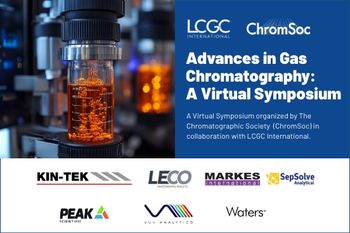
Amphetamine-Type Stimulant Extraction System Tested on Wastewater and Urine
Scientists from Dalian Maritime University in Dalian, China, are testing a new amphetamine-type stimulant extraction system on wastewater and urine samples.
Scientists from Dalian Maritime University in Dalian, China, are testing a new amphetamine-type stimulant extraction system on wastewater and urine samples (1). The scientists used a combination of dummy molecularly imprinted polymers (DMIPs) and molecularly imprinted polymer mixed matrix membranes (MMMs), and their findings were recently published in the Journal of Chromatography A (1).
Amphetamine-type stimulants (ATSs) are synthesized psychoactive substances such as
One SPE solvent that is becoming more popular are molecularly imprinted polymers (MIPs). In the study, highly cross-link polymers were prepared in the presence of template molecules, functional
The scientists created their DMIPs-MMMs-based method to test its effectiveness in analyzing complex substrates, as well as various individual qualities.
The polymers were irregularly large with a specific surface area of 330 m2 g−1. Adsorption experiments found that the imprinting factors for five ATSs (amphetamine, methamphetamine, 3,4-methylenedioxyamphetamine, 3,4-methylenedioxymethamphetamine, and 3,4-methylenedioxy-N-ethylamphetamine) were 2.3∼3.7. Furthermore, extraction conditions such as membrane matrix, sample pH, dissolved organic matter content, extraction time, and elution reagent were optimized. This enabled the developed MMMs-HPLC-MS/MS method, leading to exhibit low limits of detection (0.1∼3.0ng L−1), satisfactory recoveries (91.7∼100%), and good repeatability (RSD < 7%, n=3). It was then successfully applied to ATSs analysis in wastewater and urine samples. Recoveries of ATSs in spiked wastewater and urine were 82.0∼98.4% and 82.3∼95.7%, respectively.
Based on the study’s results, the developed MMMs-HPLC-MS/MS method could be developed further and used as a feasible strategy to extract and determine trace ATSs in wastewater and urine samples.
Reference
(1) Tan, D.; Liang, Y.; Guo, T.; Wang, Y.; Li, Y.; Sun, X.; Wang, D. Dummy molecularly imprinted polymers-agarose gel mixed matrix membrane for extraction of amphetamine-type stimulants in wastewater and urine. J. Chromatogr. A 2023, 1708, 464368. DOI:
Newsletter
Join the global community of analytical scientists who trust LCGC for insights on the latest techniques, trends, and expert solutions in chromatography.




